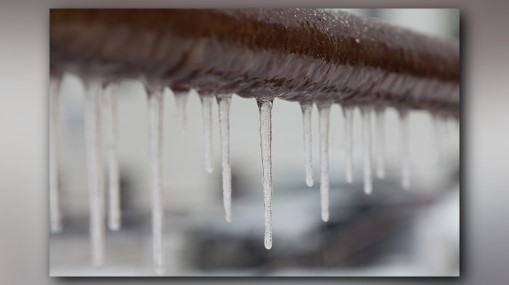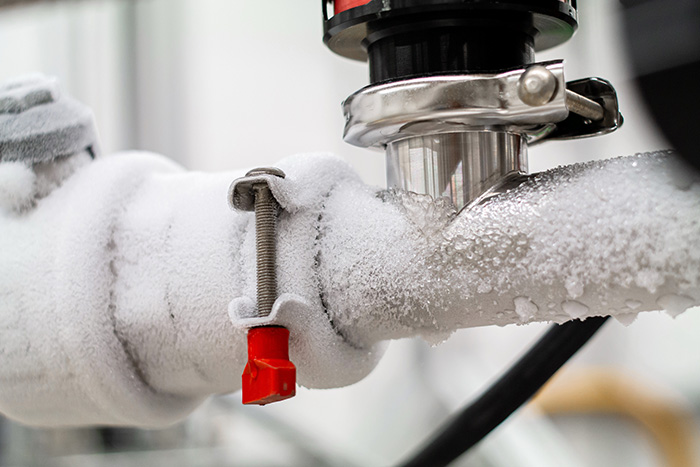Tips to Safeguard Your Pipes from Cold Weather: Expert Tips
Tips to Safeguard Your Pipes from Cold Weather: Expert Tips
Blog Article
We've stumbled on this great article involving Preventing and dealing with frozen pipes down the page on the web and thought it made perfect sense to talk about it with you on my blog.

Winter can damage your pipes, specifically by freezing pipes. Right here's exactly how to prevent it from happening and what to do if it does.
Introduction
As temperature levels decrease, the danger of frozen pipelines rises, potentially resulting in costly repairs and water damages. Comprehending how to stop icy pipes is critical for home owners in chilly environments.
Comprehending Icy Pipes
What creates pipes to ice up?
Pipes ice up when exposed to temperatures listed below 32 ° F (0 ° C) for extended durations. As water inside the pipelines freezes, it broadens, taxing the pipe walls and possibly causing them to burst.
Dangers and problems
Icy pipes can result in water disruptions, residential property damages, and expensive repairs. Burst pipes can flood homes and cause comprehensive structural damage.
Signs of Frozen Pipeline
Determining frozen pipes early can stop them from breaking.
Just how to recognize frozen pipes
Look for lowered water circulation from faucets, unusual smells or sounds from pipes, and noticeable frost on subjected pipes.
Prevention Tips
Shielding vulnerable pipelines
Cover pipelines in insulation sleeves or utilize warm tape to protect them from freezing temperature levels. Focus on pipelines in unheated or outside locations of the home.
Heating strategies
Keep indoor spaces adequately warmed, especially locations with pipes. Open cupboard doors to permit warm air to distribute around pipelines under sinks.
Safeguarding Outside Pipes
Yard hose pipes and outside taps
Separate and drain garden hose pipes prior to winter months. Mount frost-proof spigots or cover outdoor faucets with insulated caps.
What to Do If Your Pipes Freeze
Immediate actions to take
If you think frozen pipes, keep faucets open to alleviate pressure as the ice melts. Use a hairdryer or towels taken in warm water to thaw pipelines slowly.
Long-Term Solutions
Structural adjustments
Consider rerouting pipelines far from exterior wall surfaces or unheated locations. Add extra insulation to attic rooms, basements, and crawl spaces.
Upgrading insulation
Buy top notch insulation for pipes, attic rooms, and walls. Proper insulation assists maintain regular temperatures and lowers the risk of frozen pipelines.
Final thought
Stopping frozen pipelines calls for positive measures and fast actions. By recognizing the causes, indications, and safety nets, homeowners can secure their pipes throughout cold weather.
5 Ways to Prevent Frozen Pipes
Drain Outdoor Faucets and Disconnect Hoses
First, close the shut-off valve that controls the flow of water in the pipe to your outdoor faucet. Then, head outside to disconnect and drain your hose and open the outdoor faucet to allow the water to completely drain out of the line. Turn off the faucet when done. Finally, head back to the shut-off valve and drain the remaining water inside the pipe into a bucket or container. Additionally, if you have a home irrigation system, you should consider hiring an expert to clear the system of water each year.
Insulate Pipes
One of the best and most cost-effective methods for preventing frozen water pipes is to wrap your pipes with insulation. This is especially important for areas in your home that aren’t exposed to heat, such as an attic. We suggest using foam sleeves, which can typically be found at your local hardware store.
Keep Heat Running at 65
Your pipes are located inside your walls, and the temperature there is much colder than the rest of the house. To prevent your pipes from freezing, The Insurance Information Institute suggests that you keep your home heated to at least 65 degrees, even when traveling. You may want to invest in smart devices that can keep an eye on the temperature in your home while you’re away.
Leave Water Dripping
Moving water — even a small trickle — can prevent ice from forming inside your pipes. When freezing temps are imminent, start a drip of water from all faucets that serve exposed pipes. Leaving a few faucets running will also help relieve pressure inside the pipes and help prevent a rupture if the water inside freezes.
Open Cupboard Doors
Warm your kitchen and bathroom pipes by opening cupboards and vanities. You should also leave your interior doors ajar to help warm air circulate evenly throughout your home.

I found that blog post on How to Prevent Your Pipes From Freezing when exploring the web. Are you aware of someone else who is fascinated about the subject? Do not hesitate to promote it. I enjoy your readership.
Visit Our Website Report this page